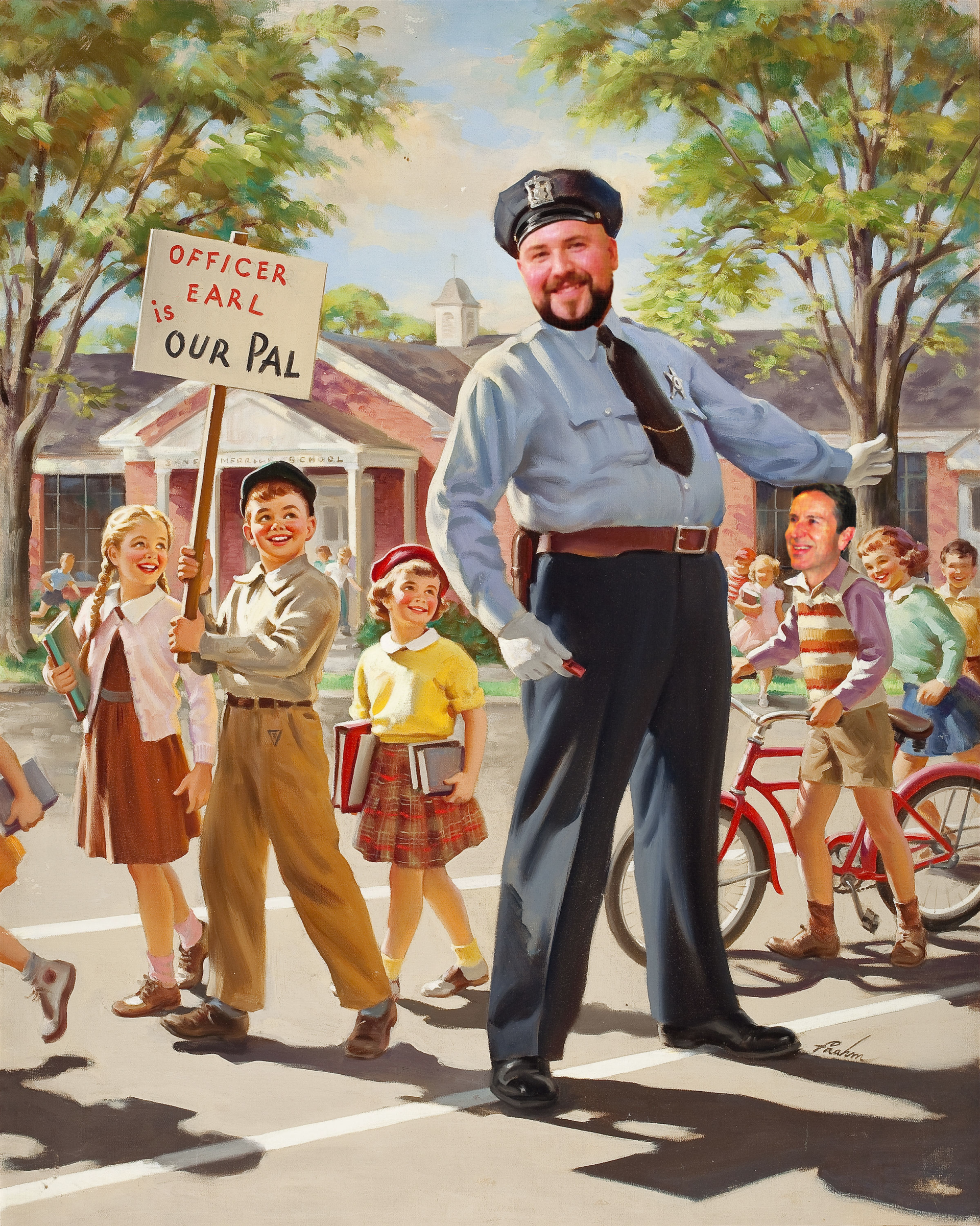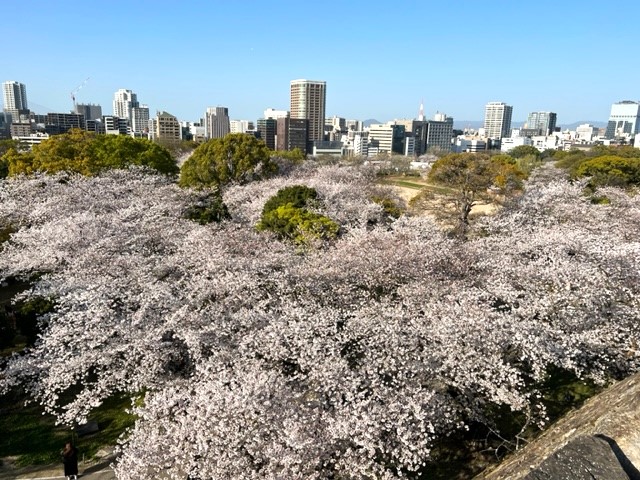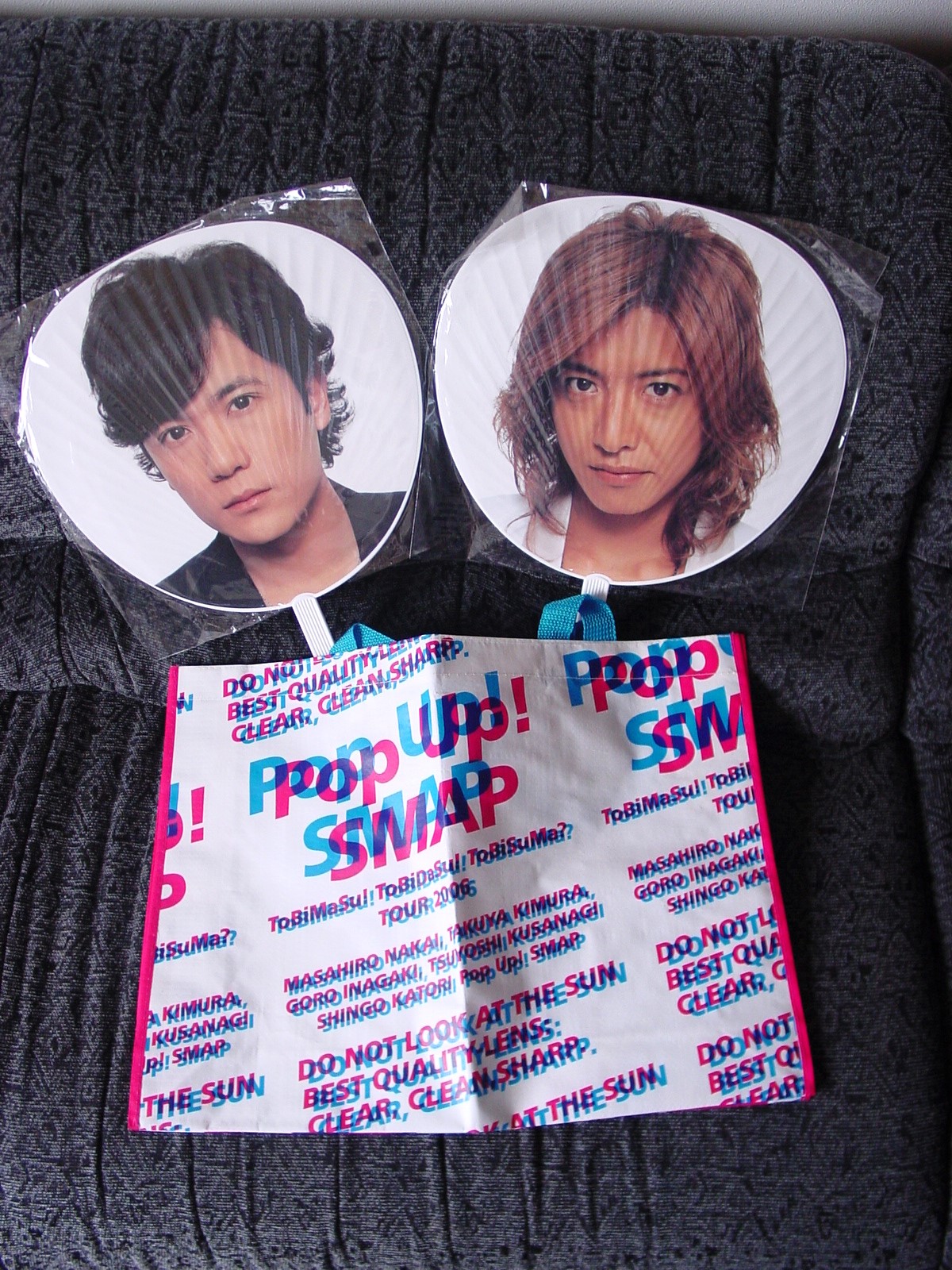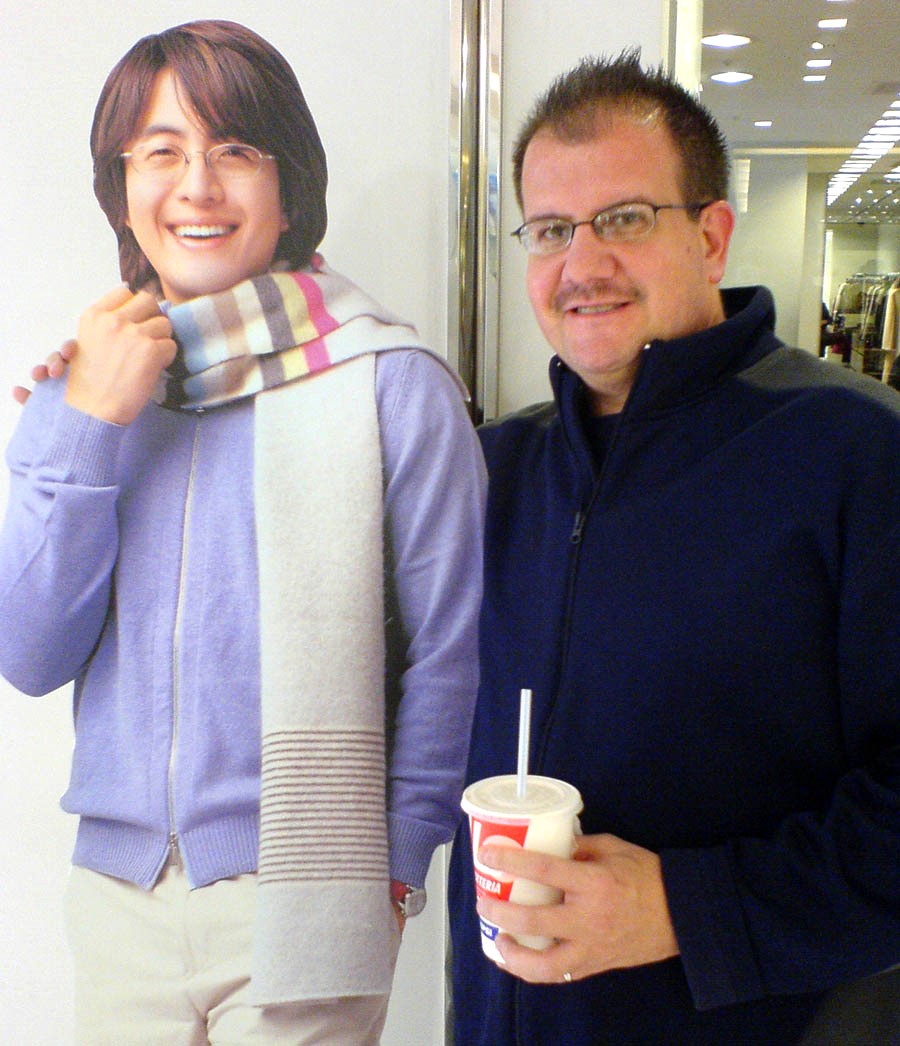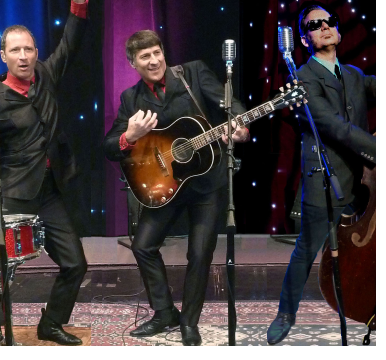Japan is a nature lover’s paradise. Whether people want to explore some of Japan’s primeval forests, climb its many active or dormant volcanoes, or hike the rugged but scenic mountains or coastlines, Japan offers a variety of natural sights and activities for the more active or adventurous visitors.
From north to south, east to west, the entire country has many natural wonders that would satisfy the most thrill-seeking person who likes to get up close to and experience nature at its finest, or the visitor who likes a leisurely stroll in nature that is relaxing, calm, and peaceful.
Japan’s natural beauty and adventure can accommodate every taste and desire. Since Japan enjoys four distinct seasons, each season offers different activities related to nature that tourists can enjoy throughout the year.
In the spring, when nature begins to reawaken from its long winter’s sleep, a popular and enjoyable activity is to do cherry blossom viewing. This occurs anywhere and everywhere around the country as cherry trees can be found in nearly all historical places, as well as in parks and around temples and shrines (main photo: A canopy of cherry blossoms in full bloom during the spring in Fukuoka, Japan). Japanese people have turned blossom viewing into a veritable national pastime during the spring season and many opportunities to view the glorious blossoms can be found in all parts of the country.
Some of you may remember me referring to Japan’s cherry blossom season as being a “national treasure.”

The summer season offers visitors many chances to hike and explore its naturally-rugged terrain including mountains, volcanoes, and its rocky coastlines. Also, summer welcomes a plethora of traditional festivals that feature floats, seasonal foods, and a local favorite, fireworks. Summertime is reserved for hiking in the many national parks, relaxing on the beach and swimming in the ocean, and enjoying numerous floral displays in communities across Japan.
The autumn season signals the popular activity of momiji-gari or “hunting red leaves.” Japan’s indigenous trees love to show off as they turn into bright colors in preparation for the coming winter months.
The Japanese maple, with its crimson-colored leaves, and the gingko tree that turns a vibrant shade of yellow, are a nature lover’s dream as they travel through the scenic areas enjoying this bright display of nature at her finest. I prefer train travel during this season so I can enjoy the multi-colored scenery as the train whisks me from place to place. The mountains look marbled as the autumn leaves turn colors and finally fall to the ground, leaving the mountains bare in preparation for the snow that will soon arrive.
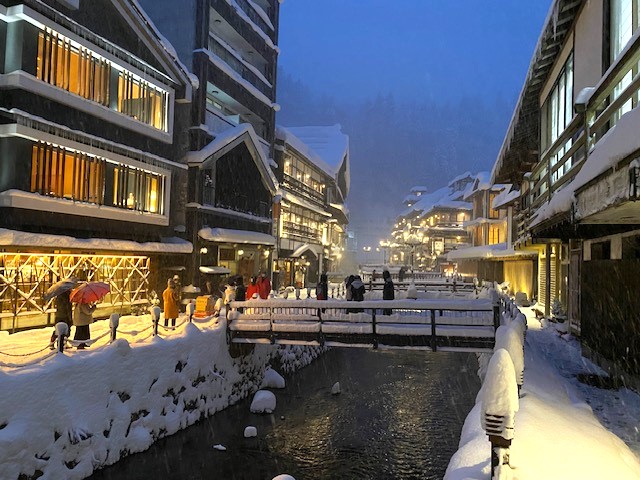
A winter scene at the very picturesque Ginzan Hot Spring town in Yamagata, Prefecture.
The winter season, especially in the northern prefectures, welcomes heavy snowfall that allows people who love to ski, snowboard, and go sledding to frolic in Japan’s winter wonderland. With a variety of snow festivals being done throughout the coldest winter months, visitors can enjoy the snow, cold, and ice to their heart’s content.
Of course, there is nothing more refreshing after spending a day in the cold and snow than to enjoy one of Japan’s glorious onsens or hot springs to warm the physical body back up, and to reenergize the mind and soul, while relishing the warmth and natural medicinal attributes of the natural springs that are located all over Japan.
Japan is well-known for a number of “natural wonders” like the imposing and most famous Mount Fuji. Also, the Tottori Sand Dunes on Honshu Island is a natural wonder worth exploring if you find yourself in the area where they are located, along with the Takachiho Gorge located in Kyushu’s Miyazaki Prefecture. The best time to hike this area is in the autumn in order to enjoy the orange, red, and yellow leaves that canvas the entire area.
Oita Prefecture is home to Beppu Onsen which is a group of eight distinct hot springs, each with its own unique character.

The author (front) and his friends enjoying a hot sand bath at the historic Takegawara Hot Spring in Oita Prefecture in Japan
A fun and unusual activity is to visit the Takegawara indoor sand bath where you change into a cotton robe and have steaming hot sand shoveled onto your body up to your neck. It is a soothing and relaxing experience that allows your body to sweat out toxins … then it is refreshing to shower afterward to wash off all the sand, and then soak in the hot spring.
Traditionally, Japanese people have had a very close and endearing relationship with nature, believing that nature should be appreciated unconditionally, hence why nature is rooted in Shintoism espousing the belief that all of nature has spirits, with pine trees holding an especially sacred position within the Shinto religion. Many festivals and celebrations in Japan are based upon nature or the four seasons.
Since nearly four-fifths of Japan is covered with mountainous terrain, it is no wonder that mountains are revered and regarded highly by Japanese people.
The Japanese Alps make up the largest mountain range in Japan, running down the center of Honshu Island. The highest mountain in Japan is Mount Fuji, which is 12,388 feet. I made it up halfway on Fuji back in the late 70s, but I was able to climb Mount Iwaki in Aomori to its highest point, which is 5,331 feet. While not a huge feat for an experienced mountain climber, no doubt, it was a harrowing and arduous experience for me, nonetheless. It was enough to satisfy any urge I had to climb any more mountains.
Before traveling to Japan, it is best to decide which season you are most interested in experiencing, then plan your itinerary accordingly.
If you are a snow bunny, then Hokkaido or Tohoku would be your preferred destination, ideally in January or February.
If cherry blossom viewing is more your cup of tea, then planning a trip in late March for the southern prefectures, or April for Honshu Island is best.
If you enjoy hiking and climbing, I recommend coming in the autumn when the heat of the summer has dissipated and the leaves are turning their vibrant shades of red and orange.
The summer months in Japan, while dreadfully hot, offer visitors a chance to see the rich greenness of Japan and to enjoy summer festivals and fireworks.
Like I mentioned before, Japan has something for everyone!
Get the most recent Shelby County Post headlines delivered to your email. Go to shelbycountypost.com and click on the free daily email signup link at the top of the page.



